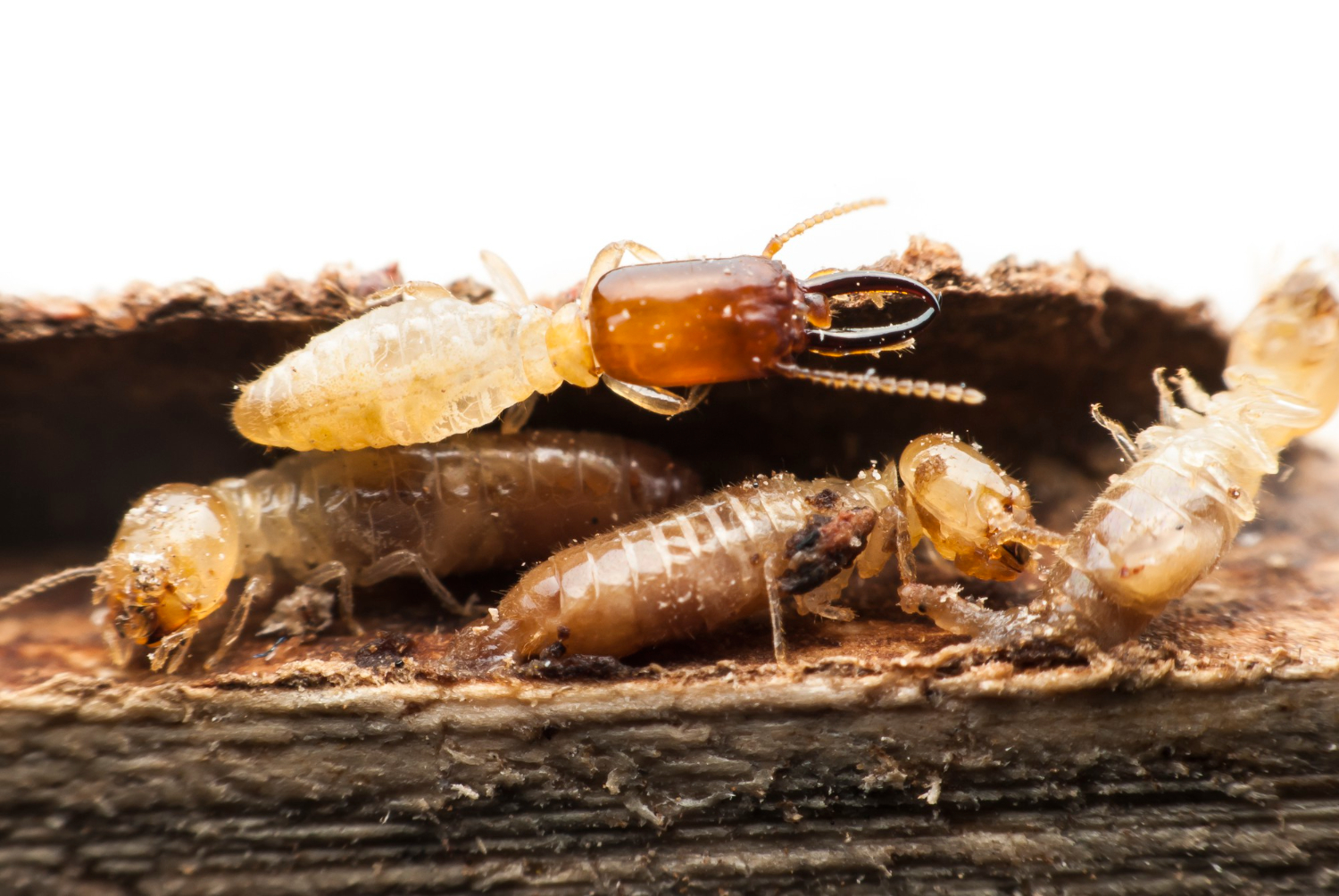Termites pose a significant threat to homeowners in Australia and can end up costing thousands of dollars in damages and even threaten the structural integrity of your home. The problem can often go overlooked for some time especially if you’re unsure of the common signs indicating that your home may be under attack by a termite infestation. Although if you suspect signs of termite damage, then don’t hesitate to contact us to arrange a termite inspection or treatment right away.
Australia is home to many termite species capable of chewing through wood in any part of your house. Read on to find out 7 signs that you may have termites lurking within your home.
Noises Inside the Walls
Termites are not the quietest eaters, and if they are feasting on your property you might hear them during the quieter periods of the day. Pay attention to subtle clicking sounds emanating from within your walls when there is no other noise around the house. These sounds serve as noticeable signs of a termite presence, but they can easily go unnoticed in a noisy household.
Visible Damage or Powdery Substances on Floors
Termites have gained notoriety for their wood-consuming habits, but they can also feed on softer building materials such as drywall, plaster, and laminate floorboards. If you come across cracks, blisters or other signs of damage, it could be an indication of termite activity. Since termites eat from the inside out, test different areas to check for thinning. Be vigilant around your wall skirting, as it often serves as an entry point for many insects. Look out for signs of movement or accumulations of wood or plaster dust, which could be caused by termite damage.
Signs of Droppings
Droppings are a quick way to identify pest infestation, but not all termites leave them behind – some actually build with their droppings. Termites are the type that leaves droppings as evidence. They push their excrement out of their nests, resulting in small black stains or dark powder. Fortunately, this often points directly to the nest, allowing a termite control expert to swiftly take action. On the other hand, subterranean termites are harder to find and rarely leave droppings behind as they utilise them to construct their tunnels and underground nests.
Flying Termites In Search of a Mate
Keep an eye on the sky. If you notice white flying insects, what you might be seeing are termites searching for a mate to establish a new colony. Most termites swarm after rainfall, so be on the lookout for unusual-looking flying bugs, particularly during summer or spring. If you recall seeing something similar before but haven’t noticed any recently, inspect your property for discarded wings. When these insects find a mate, they shed their wings, which could be an indication that a new nest is being established nearby. The new pair will seek out softwood and seal themselves inside to initiate a new colony.
Look Out for Mud Tubes
These tunnels serve as highways for subterranean termites, enabling them to travel while remaining protected. Since Australia is home to the most common subterranean termites, these insects require shelter as they move around. Mud tubes can be challenging to spot, sometimes resembling dirt streaks caused by rain. However, they often trail up walls or buildings and are composed of dirt and droppings, providing them with better structural integrity than regular mud. These mud tubes are among the most common signs of a termite infestation. The wider the spread of these tunnels, the greater the exposure of your home to these pests.
Swollen Wood
Termites produce moisture as they feed on wood. When this moisture is exposed to the inside of the wood, it can lead to swelling and expansion. If you find that your windows and doors have become stiff and difficult to close properly, it could indicate the presence of termites.
Does The Wood Sound Hollow?
Unfortunately, in many cases, signs of a termite infestation are not noticed until significant damage has occurred. It’s not uncommon for homeowners to tap on a roof support beam and hear a hollow echo inside. As mentioned earlier, termites consume wood from the inside out, leaving only a thin veneer or paint behind. If your wood sounds hollow or papery when tapped, it may indicate a severe termite infestation. In some worst case scenarios, walls have given way under pressure or vacuum cleaners have broken through skirting boards due to the extensive damage caused by termites.
Do you Think you have an Infestation?
To ensure the safety of your home from termites, it is highly recommended to schedule a thorough inspection. Contact CFPMS today for expert termite control services. Our experienced pest control experts will promptly address your problem and provide effective solutions.

